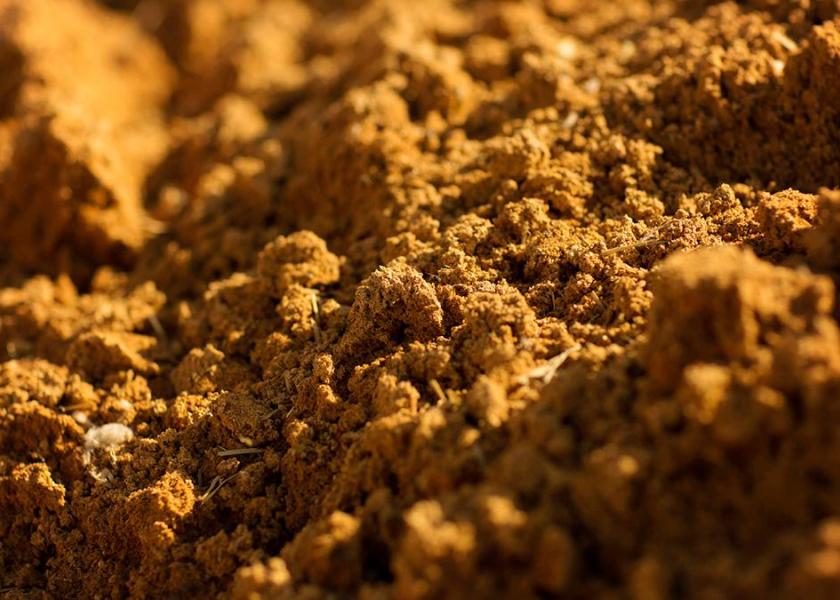How Does the Cost of Feeding Distillers Grains Compare to Corn?

From backgrounding calves to cattle on feed, distillers grains have made their way into rations across the cattle industry due to their many nutritional and digestive benefits — lower starch content, higher total digestible nutrients and higher crude protein content. But could there ever be a time when the cost of distillers grains outweighs the benefits?
Research by Elliott Dennis, assistant professor and livestock marketing economist at the University of Nebraska-Lincoln, shares economic data of the cost of feeding distillers grains, including wet, modified wet and dried, in comparison to corn.
Limitations of Distillers Grains
Known for their high protein content to accelerate weight gain, distillers grains serve as a valuable feed source to livestock operations. However, they do come with limitations.
“While modified dried distillers grains (MDGS) and wet distillers grains (WDGS) offer slightly higher feeding values than dried distillers grains (DDGS) due to elevated digestibility from higher moisture contents, their moisture contents and weights make them difficult to ship beyond a limited radius,” Dennis says.
Producers within a radius of 100 miles of the ethanol plant have access to WDGS and MDGS, but those beyond this distance often choose DDGS, the most common form of distillers grains, which can be shipped domestically and even exported internationally.
The manufacturing of ethanol also presents a limitation of distillers grains. The time of highest ethanol demand, summer travel months, does not coincide with higher cattle feeding months. Lower demand for ethanol and its co-products, specifically distillers grains, may impact the availability of the product and, therefore, impact prices.
Price of Distillers Grains Vs. Corn
When comparing the price of distillers grains to corn, it’s important to convert all figures to a dry matter basis, due to the varying levels of moisture. In Dennis’ research, he calculated the feed sources on a dry matter basis using dollars per ton ($/ton), assuming moisture levels for the different products are 15% for corn, 10% for DDGS, 52.5% for MDGS and 67.5% for WDGS.
Dennis’s findings show that since 2012, producers buying DDGS paid an average premium of more than $2/ton compared to corn, while producers feeding MDGS and WDGS saved more than $7/ton and $2.20/ton, respectively.
Additionally, in the past decade, producers buying DDGS paid more for the product than MDGS (on a dry matter basis) 96% of the time, with an average premium of $10.20/ton. DDGS were also higher than WDGS 63% of the time, with an average premium of $5.16/ton.
Meanwhile, MDGS had premium over WDGS only 25% of the time, with an average discount of $5.08/ton.
In general, DDGS tend to be more expensive as the number of potential buyers is greater. Additionally, Dennis believes the premium for WDGS over MDGS is the effect of livestock feeders’ preferences for feeding a wetter product in rations.
The graph (below) shows DDGS, MDGS and WDGS (using Nebraska prices) as a proportion of the corn price on a dry matter basis from 2012 to 2022. Values greater than 1 indicate that distillers grains are more expensive than corn, while values less than 1 indicate distillers grain to be less expensive than corn.
“The large spike in 2020 was when fuel ethanol plants shut down or idled due to the COVID-19 pandemic,” Dennis says. “We can also see that there are times before 2020 when distillers grains were more expensive relative to corn. This seasonal price pattern occurs in the third and fourth quarters as more livestock enter feeding operations during a time when fuel ethanol plants tend to be slowing production due to reduced demand for fuel ethanol. The combination of higher demand and reduced supply leads to relatively higher prices.”
However, Dennis also notes, “Paying a premium for a distillers grain product does not necessarily affect the value proposition of feeding distillers grains in the ration.”
A number of studies at the University of Nebraska-Lincoln have compared diets with and without distillers grains, at different inclusion levels (0-40% inclusion), with different base corn in the diet (dry rolled, high moisture, steam flaked), oil levels (full fat, de-oiled) and feeder cattle placement weights (calves, yearlings).
“The overall finding is that distillers still should be included in diets even at higher corn prices and price ratios, regardless of oil levels, because of the relative improvements in cattle feed efficiency,” Dennis says. More details will be released on these findings in Jan. 2023.








